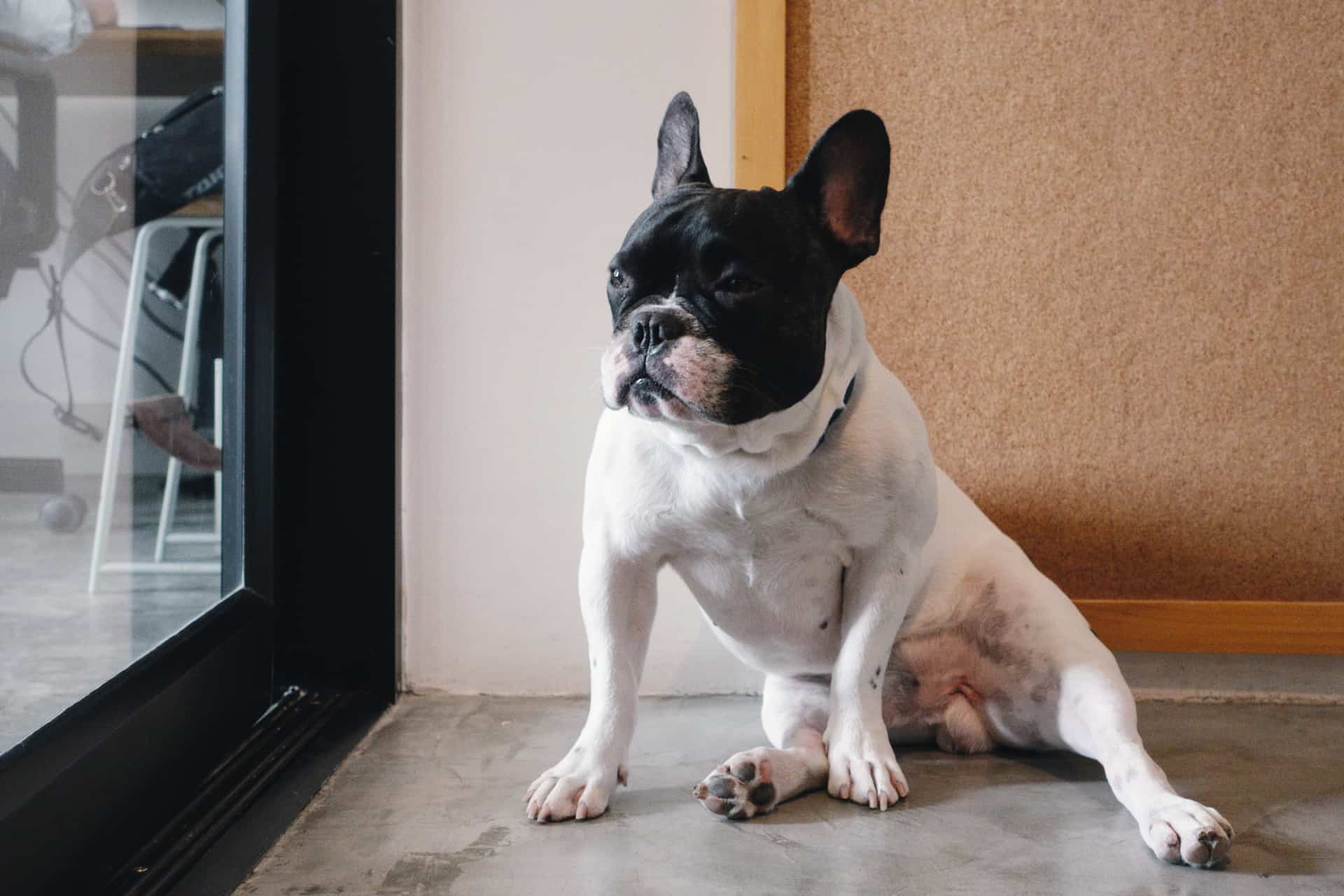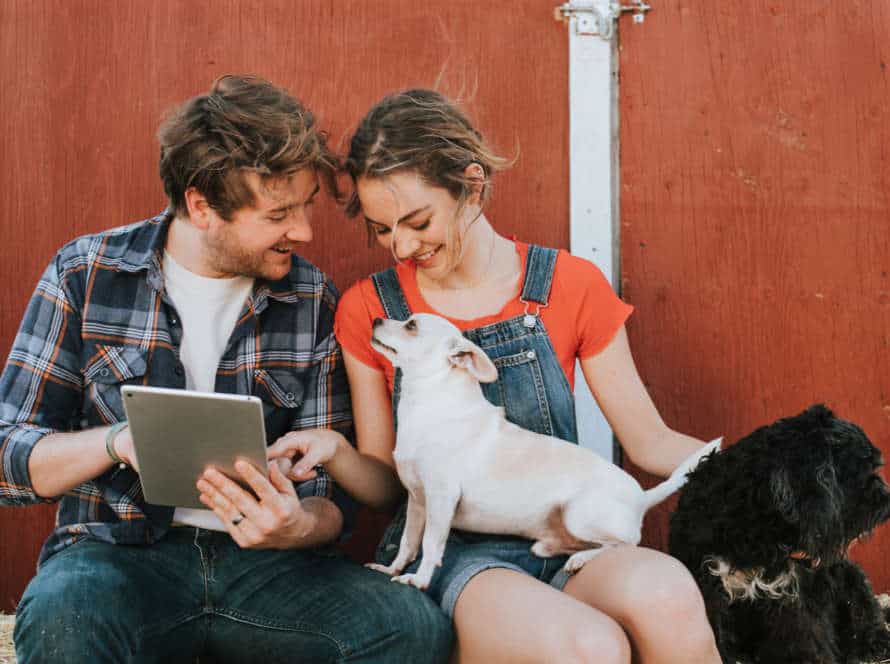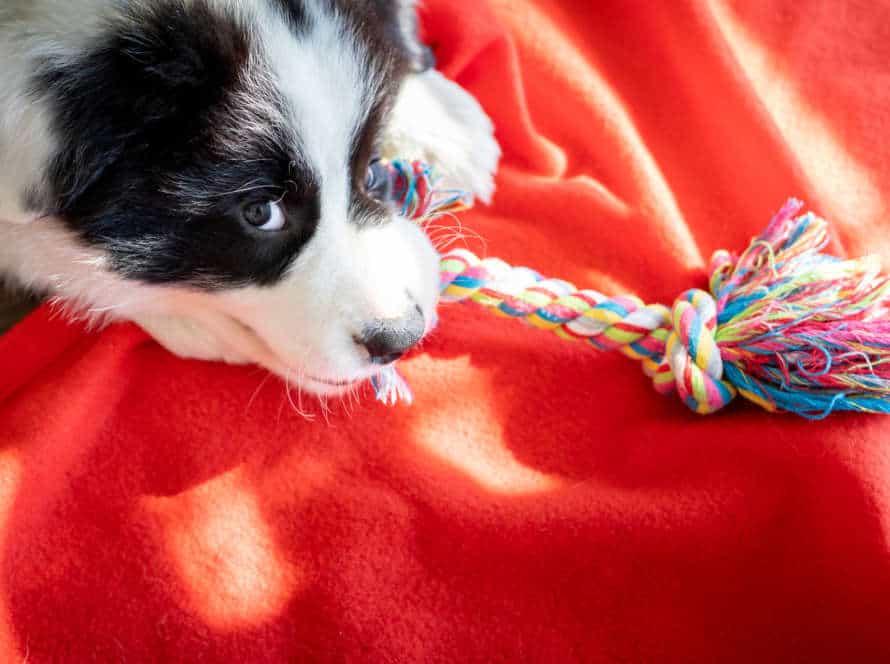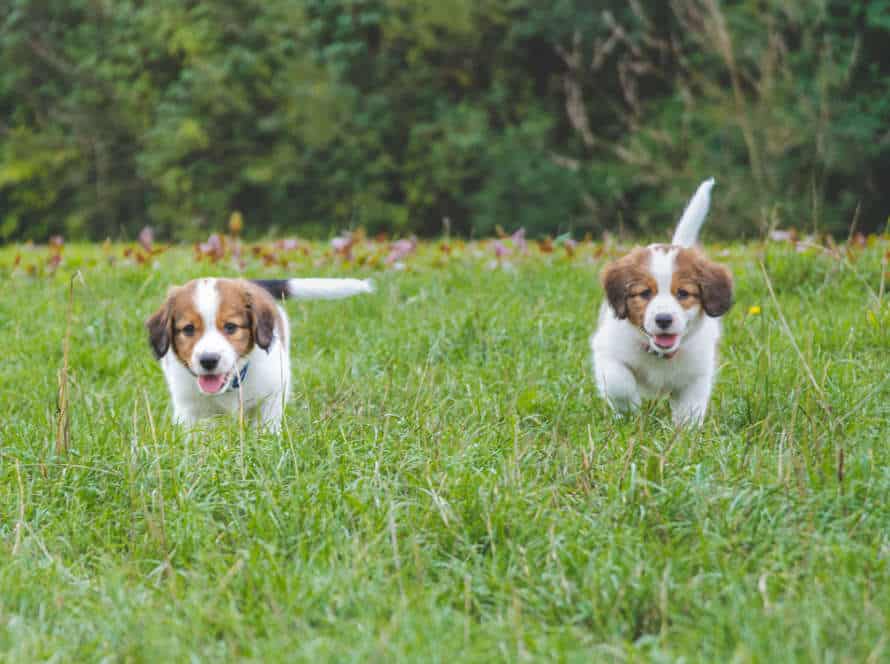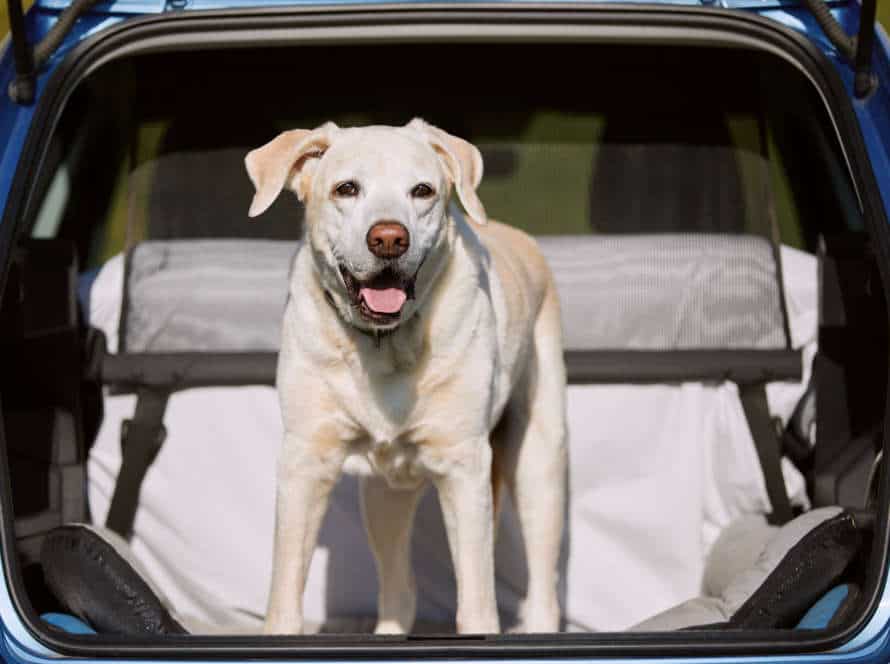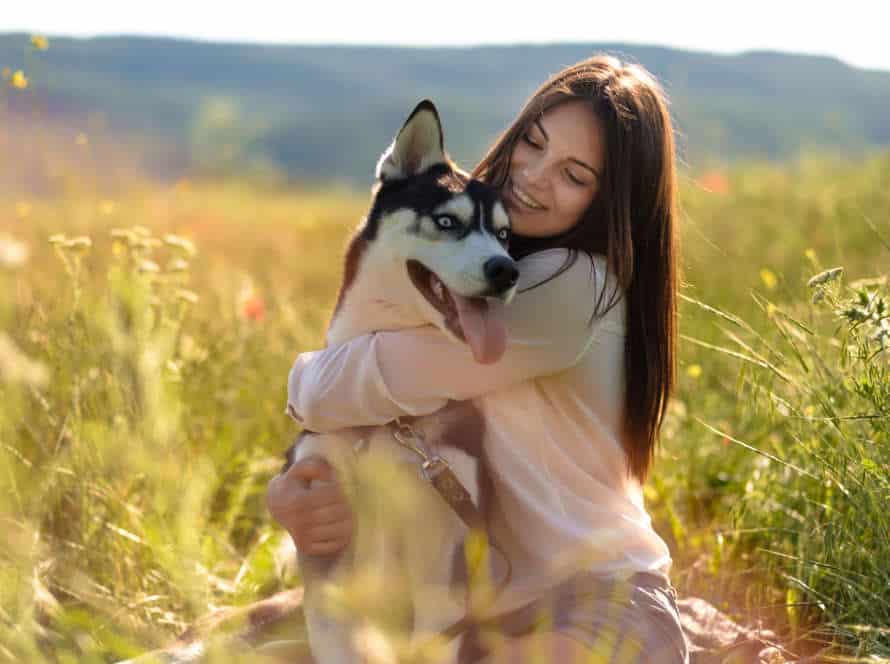New Environments: Helping Your Dog Adapt and Thrive
Dogs love their habits and changing surroundings can be tough for them. However, with the right approach, you can help your pup adjust. Here are some ideas:
- Make a place like home: Use their bedding, toys, and food dishes from the old place. This will make them feel at ease.
- Stick to a routine: Be consistent with feeding, exercising, and playing. Routine gives them a sense of security.
- Be patient: It’ll take time for your pup to get used to the new environment. Don’t get angry if they act out or seem scared.
- Give extra love: They may be anxious, so give extra affection to make them feel safe.
Follow these tips and your pet will be happy in their new home! Pro tip: Gradually introduce your dog to new people, animals, and places to help them feel more at home.
Preparing For Change
A new environment can be daunting for a pup. Preparing them for the transition can be easy if done correctly. Below are some tips to get your furry friend ready for their new home:
- Make a comfort zone: Set up a cozy area for your dog with a bed, toys, and blankets to make them feel safe and relaxed.
- Create a routine: Establishing a daily routine for feeding, walking, and playtime helps your pooch adjust to their new surroundings.
- Put familiar items around: Surround your dog with familiar items, such as their favorite toys or blankets, to provide a sense of security and reduce anxiety.
- Litter train: If you live in an apartment or have limited outdoor access, consider litter training your pup. This way, they can still do their business in a designated area indoors.
By following these tips, you can help your furry friend feel comfortable and settled in their new home. Let’s delve into how to get your pooch ready for the new home.
Introducing Your Dog to New Environments
Introducing your pup to unfamiliar places can be tough. But, there are ways to make it easier! Here are a few tactics you can use:
- Gradually expose your dog to new sights, smells, and sounds in a secure and controlled way.
- Reward your fur baby with treats and praise when they’re in the new environment.
- Walk them on a leash and watch their interactions with people, animals, and things.
- Bring familiar items like toys, bedding and food/water bowls to make them feel comfy.
- Be patient, stay consistent and be understanding. With time, your pup will get used to it and feel at home.
Pro Tip: Train your dog before introducing them to new places. This’ll help them understand and follow commands better during the transition.
Understanding Your Dog’s Personality
Grasping your pup’s disposition can lend a hand to you in readying for transformations in their habitat. This makes it uncomplicated for them to fit in and excel. Here are some normal dog character types and how they can assist you to anticipate and prepare for shifts:
- Jolly: Jolly dogs are full of vigour and love being energetic. When prepping for fresh circumstances, make sure to give lots of chances for physical exercise and playtime.
- Territorial: Dogs that are territorial guard their home and may necessitate more time to adjust to new surroundings. Give them area and time to explore their new setting at their own tempo.
- Apprehensive: Anxious dogs can be quickly distressed by mutations in their atmosphere. To aid them adjust, give a tranquil and steady routine, plus utilize calming products like pheromone sprays or collars.
- Unaffiliated: Unaffiliated dogs are self-sustaining and may not crave attention or fondness. When presenting them to new conditions, give them a comfortable and secure space where they can withdraw and feel protected.
By grasping your pup’s personality, you can assist them adjust and prosper in new settings.
Setting Realistic Expectations
When prepping your pup for a fresh atmosphere, it’s vital to set realistic expectations to assist them in adjusting and succeeding. Here are some tips to help you do this for your furry buddy:
- Comprehend your pup’s personality and temperament. Different dogs have varied reactions to unique environments based on their breed, age, and past experiences.
- Begin with small steps. Introduce your pup to the new environment gradually, beginning with short visits and increasing the duration over time.
- Have patience. Change can be nerve-wracking for dogs, and it may take some time for them to adapt. Be patient with your pup and reward them for positive behaviors.
- Seek professional help if needed. If your pup is having trouble adapting, seek the assistance of a professional dog trainer or behaviorist.
Recall, each pup is different, and it’s essential to set realistic expectations based on your particular pup’s needs and temperament. With patience and awareness, your furry friend can adjust and thrive in their fresh atmosphere.
Adapting to a New Environment
Acclimating to a new habitat can be tough for both people and animals, notably dogs. As a pet proprietor, it’s your responsibility to confirm that your pup is safe and at ease in their new home. By comprehending the adapting process, you’ll be better equipped to aid your furry friend make the alteration simpler. Let’s discover how to care for this.
Establishing a Safe Space for Your Dog
Creating a safe space for your pup is essential to help them adjust and do well in a fresh area. Here’s what you can do:
- Pick a peaceful and snug spot in your home, far away from huge amounts of foot traffic and loud racket.
- Get a cushy bed or carpet and put their favored games and snacks next to it.
- Gradually show your pup their new place. Start with brief visits and then slowly maximize the period.
- Set up a regular schedule of meals, fun time, and teaching to help your pup feel secure and calm.
- Be patient and present plenty of favorable reinforcement as your pup gets used to their new atmosphere.
- Don’t forget to spend quality time with your pup, such as gaming or taking them for a walk, to construct your relationship and assure them of your love and support.
Keeping Your Dog Busy and Entertained
Want to keep your pup happy and healthy? Try these ideas!
- Puzzle Toys: Give your dog a challenge and reward them for solving it. Fill a toy with treats or kibble and let them figure out how to get it out!
- Hide and Seek: Hide treats or toys around the house or yard and watch your dog search for them. Strengthens their brain and sense of smell.
- Walks and Runs: Get them moving! Exercise is key for physical and mental health. Take them on a walk or run in their new environment to help them become familiar.
- Training Sessions: Spend time bonding and teaching them new skills. Training builds confidence too.
- Playtime with Other Dogs: Socialization is essential. Take them to the dog park or set up a playdate with a friend’s pup.
Pro Tip: Prevent bad behavior like chewing and barking. Supervise playtime and choose activities that fit their age, breed and personality.
Gradually Introducing Your Dog to New People and Animals
Introducing your pup to new folks and animals is a must for helping them adjust to a new environment. Here are some tips:
- Take it easy. Let them get comfy with their new surroundings before introducing them to new people or animals. Going too fast can make them stressed.
- Use positive reinforcement. Give them treats and praise for good behaviour during the introductions.
- Keep an eye on them. Monitor their body language and step in if they seem frightened or anxious.
- Start small. Have short, controlled interactions. Gradually increase the time and difficulty of socialization.
- Be patient and use positive reinforcement. This will help your furry pal develop confidence and positive associations with new people and animals in their new environment.
Overcoming Challenges in a New Environment
Moving your pup to a new house can be tough for both you and them. New settings can be scary, which can cause anxiety and make them less cheerful. To make sure your pup is healthy and pleased in the new place, you need to recognize any issues and use strategies to help them adjust and feel better.
Separation Anxiety and New Environments
Dogs may find it tough to adjust to new surroundings and suffer from separation anxiety. But there are ways to help your pup settle in and be happy. Here’s how!
- Keep a consistent schedule. This will make them feel secure.
- Have a comfy, safe spot. This’ll reduce their anxieties.
- Let them get used to the place gradually. Too much too soon can be overwhelming.
- Exercise is essential. It’ll help them cope better with the change.
- If things don’t improve, it’s best to seek professional help. A vet or a dog trainer can be a great help.
Coping with Noise Sensitivity
If your pup has trouble adapting to a new environment because of sound sensitivity, here are a few coping strategies:
- Create a safe zone! Designate a quiet spot in your house for your pup to chill when they’re overwhelmed by noise. Give it all the comforts they love, like toys and blankets.
- Use white noise. Try using white noise machines, air purifiers, or fans to mask out loud noises and help your dog stay calm.
- Behavior modification. Train your pup with positive reinforcement to help them cope with noise-induced anxiety. Get help from an expert dog trainer.
- Consult with a vet. If the problem is serious, consider medication prescribed by a vet. Always make sure this is a last resort.
- Be patient and give lots of love and support. This’ll help your pup overcome noise sensitivity and feel more at home.
Dealing with Potty Training in a New Environment
Potty training a pup in a strange spot can be tough. But with the correct procedure and a lot of patience, it can be done! Here are a few hints that can help:
- Have a regular schedule for taking pup outside and follow it.
- Take pup outside more than you think is necessary.
- Give pup praise and treats when they go potty outside.
- Closely watch pup indoors. Use a crate or confinement area if you can’t watch them.
- Be patient and don’t punish pup for accidents inside. This might cause anxiety and interfere with potty training.
- Keep in mind it takes time to adjust to a new environment. Don’t give up! With determination and positive reinforcement, pup will do well in their new home.
Positive Reinforcement Training in a New Environment
Positive reinforcement training is essential for helping your pup adjust to a new place. This type of training focuses on rewarding your dog for doing what you desire. Instead of punishing them for unwanted actions, they learn what’s appropriate in the new environment. So, with positive reinforcement your canine friend will understand what’s accepted and be more likely to thrive.
Using Treats and Rewards to Encourage Good Behavior
Treats and rewards are great for encouraging good behavior in dogs, especially when settling into a new environment. Positive reinforcement training can help your furry friend feel safe, comfy, and confident.
Here are some tips:
- Opt for high-value treats such as chicken, cheese, or liver.
- Reward your pup after they show good behaviour like sitting still or coming when called.
- Use a clicker or verbal cue such as “good girl/boy” to signal it’s done right.
- Set up training sessions throughout the day, including mealtime, to reinforce good behaviour and form a bond.
- With patience and consistency, your pup will link good behaviour with positive reinforcement, and feel more at home.
Remember to be patient, consistent, and positive!
Setting Clear Boundaries and Consistency in Training
Training your pup in a novel setting? Be consistent and set boundaries. Here are some hints:
- Decide rules and limits right away. Consistency is essential, so everyone in the house must agree on what’s acceptable and what’s not.
- Encourage good behavior with positive reinforcement. Give treats, compliments, and cuddles when your dog does something nice.
- Take it slow and let your pup get comfortable. Let them explore, and give them a secure spot if they’re feeling overwhelmed.
If you provide patience, consistency and positive reinforcement, your pup will quickly learn to love their new environment and excel in training.
Seeking Professional Help if Needed
If you need it, it’s important to get professional help when introducing positive reinforcement training to your pup in a new setting. Here’s how a pro can help:
- Assess your pooch’s behavior and mood to decide which positive reinforcement techniques and plans will work best.
- Create a tailored plan based on your pet’s needs and character.
- Instruct you in using positive reinforcement techniques properly and consistently for the best outcome.
- Keep track of your dog’s development and change the training plan where necessary to guarantee success.
Remember, looking for professional assistance isn’t a sign of weakness or failure, but rather a sensible and proactive way to guarantee your furry pal’s health and joy.
Supporting Your Dog’s Overall Health in a New Environment
Dogs can experience many emotions when they are in a new environment. We must help them get used to it. Supporting their wellbeing in this new place can make them feel safe. Here’s how to do it! Tips and tricks will be discussed.
Providing Proper Nutrition and Exercise
When transitioning your pup to a new home, nutrition and exercise are key for their health and adaptation.
Ensure their diet is balanced and meets their individual needs. Consider adding Omega-3s or probiotics for immune and digestive support.
Regular exercise is a must to keep them healthy- both physically and mentally. Take them on daily walks and have interactive playtime.
Monitor their behavior and appetite to check they’re adjusting. If you have worries, speak to their vet.
Pro tip: Setting up a routine for feeding, exercise and playtime can help your pup feel secure.
Maintaining Regular Vet Visits and Grooming
Adjusting to a new environment can be stressful for your pup. Help them out with regular vet visits and grooming!
- Vet Visits: Take your pup to the doc often. That way, they’ll stay healthy and any health problems can be caught early. Your vet can give tips to help in the new environment too.
- Grooming: Keep a routine. Grooming helps keep their coat clean and healthy, prevents tangles and mats and can detect skin issues. It also helps to bond you and your pup, making them more comfortable.
Pro Tip: Keep their routine and surroundings familiar. Provide their favorite toys, bedding, and food to help them transition.
Monitoring Your Dog’s Mental Health and Well-being
Observing your pup’s mental health is a must for their overall health in new places. Here are some tips to help your pup adjust and flourish:
- Be vigilant – Note your pup’s behavior and schedule. Are they eating and sleeping alright? Do they seem anxious or distant? Knowing your pup’s usual behavior helps you identify any changes that could signify an issue.
- Provide adequate exercise – Daily exercise is key for your pup’s physical and mental well-being. It helps them burn energy, lower stress and boost their mood.
- Give them a secure space – Your pup needs a place where they feel safe. Whether it’s a crate, bed or a room, make sure they have a spot where they feel secure.
- Spend quality time with them – Dogs are social animals and benefit from companionship and interaction. Reserve some time to play, cuddle and bond with your pup.
- Check their diet – A nutritious, balanced diet is essential for your pup’s mental and physical health. Ensure they are consuming good quality food and water.
Vet checkup tip: Regular visits to the vet can help you detect any health issues early on.
Frequently Asked Questions
Q: How do I help my dog adapt to a new environment?
A: Introduce them to the space gradually, giving them time to explore and get comfortable. Stick to a routine and provide plenty of positive reinforcement and attention.
Q: What can I do to help my dog thrive in a new environment?
A: Ensure they receive plenty of exercise, mental stimulation, and socialization, and provide them with a cozy bed and comforting toys. Consider enrolling them in a training class to build their confidence and bond with them.
Q: What signs should I look for to know if my dog is struggling with the transition to a new environment?
A: Lethargy, loss of appetite, excessive barking or whining, destructive behavior, and hiding or withdrawing may indicate that your dog is not adjusting well to their new surroundings.
Q: How can I make my new home pet-friendly?
A: Secure any hazardous areas, such as pools or steep drop-offs, and cover any exposed wires or cords. Remove any toxic plants or chemicals and set up a designated pet area with toys, food and water dishes, and a comfortable bed.
Q: Should I give my dog extra attention during the transition period?
A: Yes, providing extra love and attention can help ease their anxiety and help them feel more secure in their new environment.
Q: How long does it take for a dog to fully adjust to a new environment?
A: It varies depending on the dog and the situation, but it can take anywhere from a few days to a few weeks for a dog to fully adapt to a new environment.

